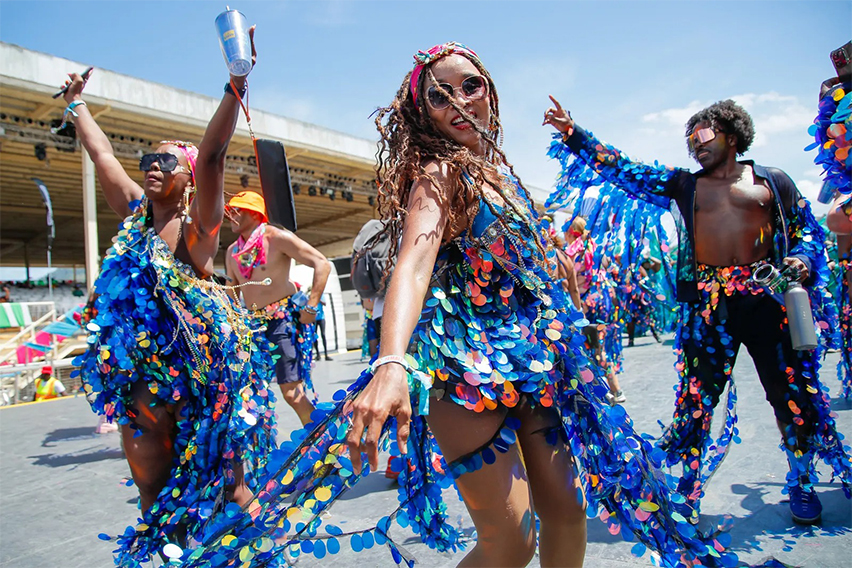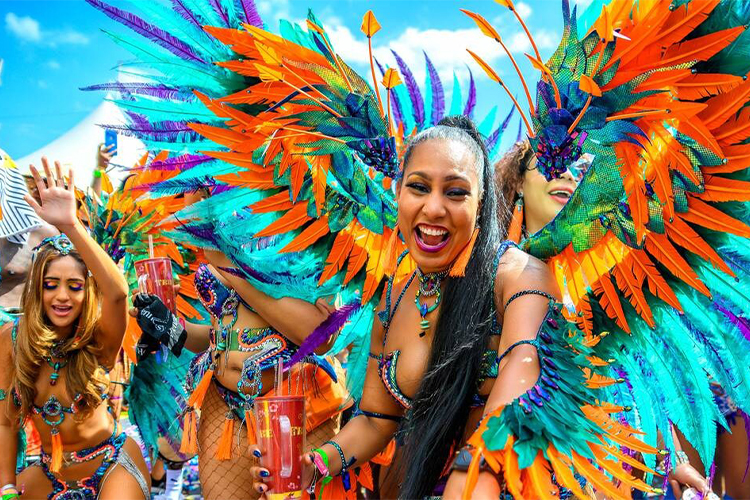
Carnival in Trinidad and Tobago is a celebration of color, music, and dance that attracts thousands of visitors every year. The festival is known for its extravagant costumes, lively parades, and energetic parties. Among the many bands that participate in the carnival, one stands out as the most fashionable – the Lost Tribe.
The Lost Tribe was founded in 2016 by a group of friends who wanted to create a band that reflected their love for Trinidadian culture and their passion for design. Their vision was to create costumes that were not only beautiful but also meaningful, telling a story that would resonate with the people of Trinidad and Tobago. Over the years, the Lost Tribe has become one of the most popular bands in the carnival, winning several awards for their stunning designs.
But what is the story behind the Lost Tribe? How did they become the most fashionable band in the carnival? To answer these questions, we need to go back to the beginning.

The Lost Tribe was founded in 2016 by a group of six friends – Valmiki Maharaj, Laura Dowrich-Phillips, Anya Ayoung-Chee, Christian Boucaud, Charlotte Elias, and Omar Khan. All of them were veterans of the carnival, having participated in various bands over the years. They shared a common vision – to create a band that would combine the best of Trinidadian culture with cutting-edge design.
Their first step was to choose a name for the band. They wanted something that would be memorable, yet meaningful. After much discussion, they settled on the name “Lost Tribe.” The name was inspired by the concept of the “lost tribes” of Israel – groups of people who were believed to have been scattered around the world but were still connected to their cultural roots. The founders of the Lost Tribe saw themselves as members of a lost tribe of Trinidad and Tobago, disconnected from their cultural heritage but eager to rediscover it.
The Lost Tribe is known for its stunning costumes, which are a fusion of traditional Trinidadian elements and modern design. The designers of the Lost Tribe draw inspiration from the natural world, incorporating elements of flora and fauna into their designs. They also use a variety of materials, including feathers, beads, and sequins, to create intricate patterns and textures.
But what sets the Lost Tribe apart from other bands is their focus on storytelling. Each costume is designed to tell a story, often drawing on themes from Trinidadian mythology or history. For example, the band’s 2019 costume theme was “Anansi,” the trickster spider from West African folklore who is also a beloved character in Trinidadian culture. The costumes featured spiderweb patterns, beaded spider legs, and other elements that evoked the spirit of Anansi.
The Lost Tribe’s design philosophy is grounded in a deep respect for Trinidadian culture and a desire to preserve it for future generations. As Valmiki Maharaj, one of the founders of the band, has said, “We want to make sure that we’re telling our own stories and not letting them be told for us.”

Since its founding in 2016, the Lost Tribe has had a significant impact on the carnival. The band has attracted a large following, both among locals and visitors. Its costumes are eagerly anticipated every year, and the band has won several awards for its designs.
But the impact of the Lost Tribe goes beyond just its costumes. The band has also been a leader in promoting sustainable practices in the carnival. In 2020, the Lost Tribe announced that it would be using biodegradable materials in its costumes, including feathers and beads made from natural materials. The band also launched a recycling program, encouraging its members and other bands to recycle their costumes and other materials.
The Lost Tribe has also been a champion of inclusivity in the carnival. The band has a diverse membership, with people of all races, ages, and backgrounds participating. This is in contrast to many other bands in the carnival, which have been criticized for promoting a narrow, Eurocentric standard of beauty.
The Lost Tribe has also been at the forefront of efforts to combat cultural appropriation in the carnival. In 2019, the band drew criticism for its “Moko Sõmõkow” costume theme, which was seen by some as appropriating the culture of the Kalinago people of Dominica. The Lost Tribe responded by engaging in a dialogue with members of the Kalinago community and working to ensure that their costumes were respectful and accurate.
The Lost Tribe has also been a force for social change outside of the carnival. In 2020, the band launched the “Lost Voices” initiative, which aimed to give a voice to marginalized communities in Trinidad and Tobago. The initiative included a series of workshops and discussions on topics such as mental health, gender equality, and LGBTQ+ rights.
The Lost Tribe has come a long way since its founding in 2016. The band has established itself as a leader in the carnival, with a strong following and a reputation for innovative designs. But the founders of the band are not content to rest on their laurels. They are constantly seeking to push the boundaries of design and to find new ways to tell the stories of Trinidad and Tobago.
One of the challenges that the Lost Tribe faces is the cost of producing its costumes. The band’s costumes are among the most expensive in the carnival, with prices ranging from $1,500 to $6,000. This makes it difficult for some people to participate in the band, and the founders of the Lost Tribe are aware of this.
To address this issue, the Lost Tribe has launched a series of initiatives aimed at making its costumes more accessible. These include payment plans, partnerships with local businesses, and collaborations with other bands. The band has also launched a scholarship program to help young designers and artists to get involved in the carnival.
The Lost Tribe is more than just a carnival band – it is a movement. The band’s founders and members are driven by a deep love for Trinidadian culture and a desire to preserve it for future generations. They have created a band that is not only beautiful but also meaningful, telling the stories of Trinidad and Tobago in a way that resonates with people from all walks of life.
The Lost Tribe has had a significant impact on the carnival, promoting sustainable practices, inclusivity, and cultural sensitivity. The band has also been a force for social change outside of the carnival, using its platform to give a voice to marginalized communities.
The future of the Lost Tribe is bright. The band’s founders and members are committed to pushing the boundaries of design and finding new ways to tell the stories of Trinidad and Tobago. They are also committed to making their costumes more accessible, so that everyone can participate in the celebration of Trinidadian culture that is Carnival.